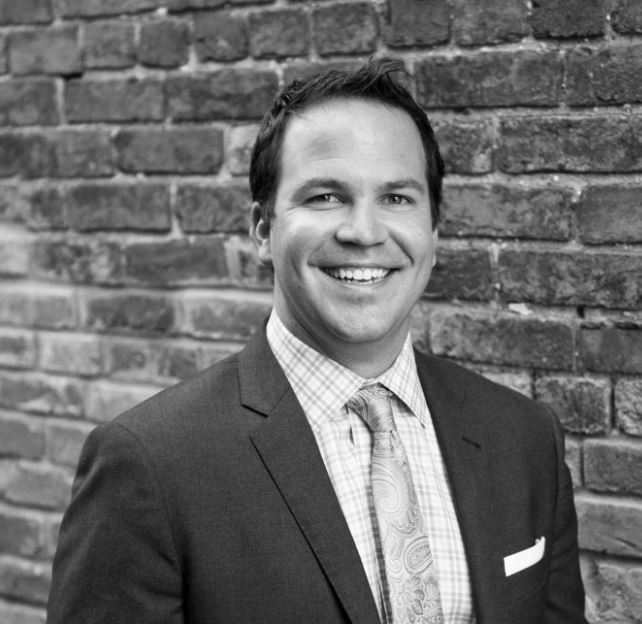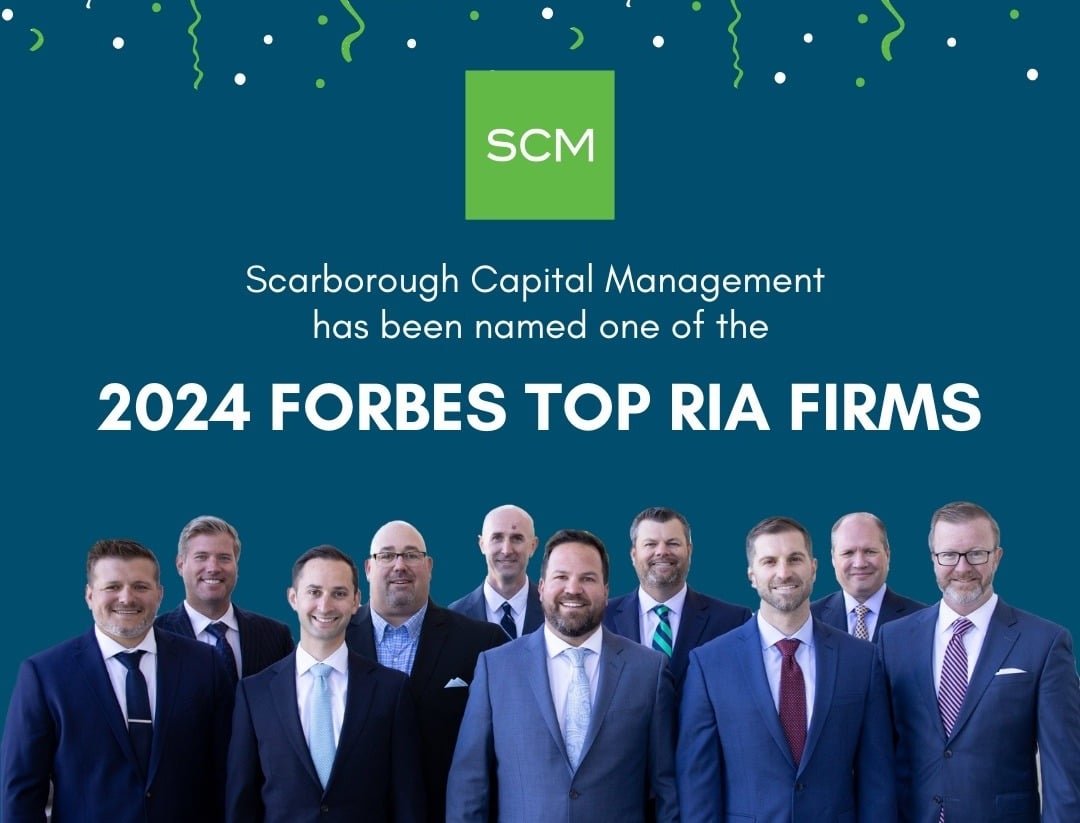

by Jay Sprinkel
8 Things You Should Consider Doing with Your 401(k)
A lot of people have access to a 401(k), but unfortunately, way too many of them aren’t entirely taking advantage of it and, ultimately, are leaving money on the table.
Maybe you’re saving a portion of your paycheck every month. And maybe you did your best when you first became eligible to select the right investments. But perhaps you haven’t reviewed your plan since it was first set up, and therefore, you’re not entirely sure if you’re saving enough.
Does this sound like you?
At Scarborough Capital Management, 401(k) management services involve more than just a set-it-and-forget-it process. We’ve created this list so you can review how well you’re utilizing your 401(k) plan and whether you’re on track to reaching the retirement you want.
Below are 8 ways to know if you’ve developed good 401(k) plan participant habits. As you read through the list, give yourself 1 point for every step you can say “yes” to. When you get to the end, you’ll have a score of 1 to 8 and can determine which areas you may be able to improve.
To review your results in full and create an action plan going forward, contact our team. The financial advisors at Scarborough Capital Management specialize in 401(k) management and look forward to helping you get the most out of your plan.
1. You’re Getting Your Full 401(k) Employer Match
At the very least, you should consider contributing enough to get your full 401(k) employer match (if one is offered to you). The most common employer match is 50 percent of your contributions, up to a certain percent of your salary, but some companies offer up to 100 percent of your contributions up to a certain amount.
Let’s say you make $80,000 a year, and your employer offers a dollar-for-dollar match on up to 5 percent of your salary. If you contribute $4,000, your employer will add an extra $4,00,0 too. If you only contribute $2,000, you’ll only get an extra $2,000 of this essentially free money.
Take note: Some employers have vesting periods, which means you may need to work with your employer for a set number of years before you can keep your company match. Make sure you understand your 401(k) vesting schedule so you can ensure that money is yours if you change jobs.
2. You Know How Much You Need to Save to Fund Your Ideal Retirement Lifestyle
There’s a general rule of thumb that says if you save $1 million, you’ll be set for retirement. But as with most rules of thumb, you should take it with a grain of salt.
In reality, how much you should save for retirement depends on a host of factors, including:
- What activities do you plan on doing in retirement?
- Where do you want to live?
- Your anticipated life expectancy?
- What age do you plan on retiring?
- How much debt do you have?
- What legacy do you want to leave behind?
You can use a generic online retirement calculator to get an estimate, but to get a true picture of your retirement needs, it’s helpful to discuss your plans with a financial advisor who can help flush out your ideal retirement lifestyle and calculate how much money you’ll need to fund it. Retirement planning in Maryland, for example, is different than in other areas where the cost of living could be higher or lower.
3. You’re Investing as Much as You Can
There are dozens of reasons why you may think delaying saving for retirement is a good idea. But investing as much as you can early on can set you on the fast track to retirement.
Not to mention, saving for retirement now can lower your taxable income for the year (meaning you could have a smaller tax bill).
For 2025, you can contribute up to $23,500 in your 401(k), plus an additional $7,500 if you’re at least age 50.
If you get an early start, you may not need to work as hard to fund your ideal retirement lifestyle later. If you’re trying to catch up with lost times, you may need to save more aggressively to get where you want to be.
4. You’re Investing Based on Your Risk Tolerance
For a lot of people, the most confusing part of a 401(k) is figuring out how to invest it.
First and foremost, your 401(k) should be invested according to your risk tolerance. (Your risk tolerance is how much volatility in the value of your investments that you can withstand before you start to panic and lose sleep at night.)
If you’re unsure how to build your portfolio around your risk tolerance, talk with a financial advisor. The financial advisors at Scarborough Capital Management can help you develop your portfolio in a way that allows you to reach your goals without panicking about the stock market.
5. You Know How to Minimize Taxes on Withdrawals Once You Retire
Do you have a basic understanding of how 401(k) withdrawals will affect your taxes in retirement? If not, it’s something you need to start thinking about. Your 401(k) distributions get taxed as ordinary income, which means your withdrawals will be taxed depending on which bracket you fall in at retirement.
Luckily, there are certain strategies you can use to help minimize taxes in retirement. This could include delaying Social Security benefits, using the “still working” exception for Required Minimum Distributions (RMDs), and pulling money from a mix of pre-tax and after-tax investment accounts.
6. You Don’t Have Too Much of Your Wealth Tied in Company Stock
Some companies give their employees access to discounted employee stock purchase plans. If this is available to you, make sure that the amount of wealth that is tied to this company stock makes sense for your situation. Having all your eggs in one basket can jeopardize your future financial security if something happens to the company.
A financial advisor can help you decide how much of your portfolio should be weighted in company stock based on your situation.
7. You Have Other Retirement Savings Outside of Your 401(k)
Suppose you haven’t opened any other investment accounts outside of your 401(k). In that case, you could be missing out on critical opportunities to save on taxes, generate passive income and diversify your income streams. Some popular investment vehicles for retirement include annuities, real estate and IRAs. Not all of these vehicles are right for everyone, so it’s important to talk with a financial advisor to see which is best for you.
8. You’ve Talked to a Financial Advisor About Your 401(k)
The quickest way to feel confident in your 401(k) decisions is to get a second opinion from a trusted financial advisor. The right financial advisor can help you:
- Determine the age you can afford to retire
- Calculate how much you need to save for retirement
- Give specific advice on how to invest your 401(k)
- Determine what your expenses could be in retirement
Statistics show that working with a financial advisor provides real value. Remember, there are no second chances in retirement. Do it right the first time by getting the help you need.
Tally Up Your Score
How did you fare? Do you have healthy 401(k) participant habits?
- 0 to 3 Yeses: You may be leaving money on the table. Consider meeting with a financial advisor who can help you plan out how you can catch up for retirement in a hurry.
- 4 to 6 Yeses: You’re on your way, but your plan could maybe use some fine-tuning. Have a financial advisor evaluate your progress and point out any areas that need work.
- 7 to 8 Yeses: Congratulations! You’re on the right track for retirement. Do you have a comprehensive financial plan in place? Schedule a no-obligation conversation with the Scarborough Capital Management team. A simple consultation can go a long way.
A 401(k) is a powerful tool to save for retirement. If you’d like help analyzing your benefits and making the most of your plan, let’s talk.
Securities offered through Independent Financial Group, LLC (IFG), a registered broker-dealer. Member FINRA/SIPC. Advisory services offered through Scarborough Capital Management, a federally registered investment Adviser under the Investment Advisers Act of 1940. Registration as an investment adviser does not imply a certain level of skill or training. IFG and Scarborough Capital Management are unaffiliated entities.
Electronic communications are not necessarily confidential and may not be delivered or received reliably. Therefore, do not send orders to buy or sell securities or other instructions related to your accounts via e-mail. The material contained herein is confidential and intended for the addressed recipient. If you are not the intended recipient for this message, any review, dissemination, distribution or duplication of this email is strictly prohibited. Please contact the sender immediately if you have received this message in error.
Certified Financial Planner Board of Standards Inc. (CFP) owns the certification marks CFP®, CERTIFIED FINANCIAL PLANNER™ and CFP (with plaque design) in the United States., which it authorizes use of by individuals who successfully complete CFP Board’s initial and ongoing certification requirements.
The opinions voiced on this blog are for general informational purposes only and are not intended to provide or be a substitute for specific professional financial, tax or legal advice or recommendations for any individuals.





